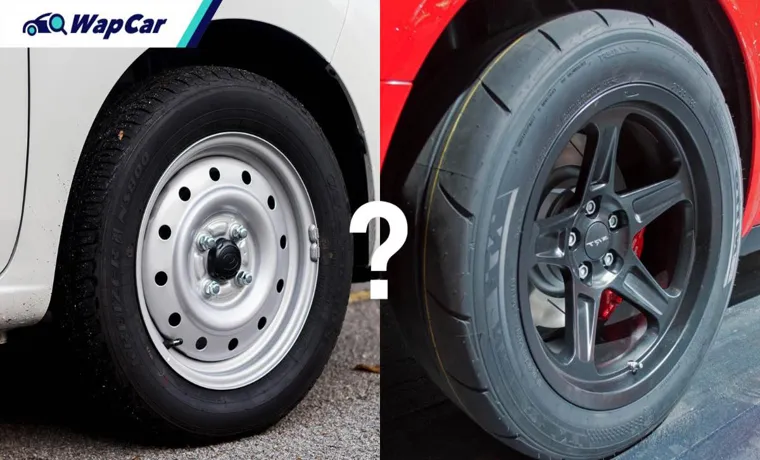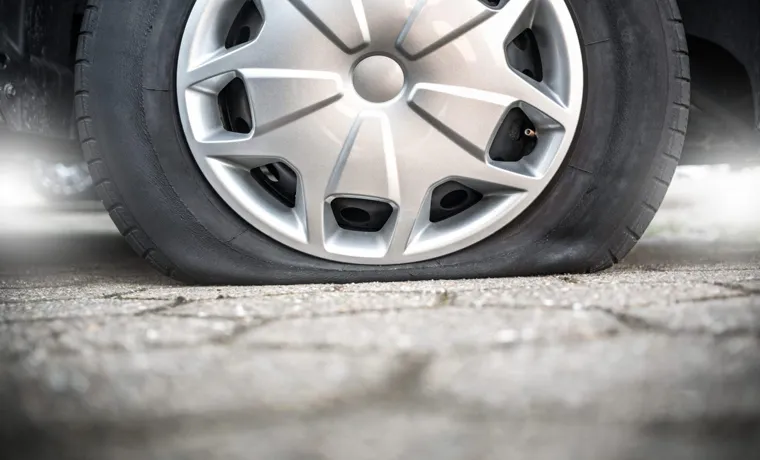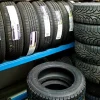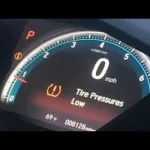Have you ever wondered what the consequences of having one smaller tire on your vehicle might be? Well, as it turns out, there are a few things you should know before hitting the road. When driving a car, even the slightest changes in its mechanics can affect its overall performance, safety, and fuel efficiency. And installing a smaller tire can not only be costly in the long run but also put you in danger.
In this blog post, we will dive into the effects of having one smaller tire and why it’s essential to keep your vehicle’s tires in good condition. So sit tight, fasten your seatbelts, and let’s explore the consequences of having one smaller tire on your car.
Table of Contents
Impact on Performance
If one tire on a vehicle is smaller than the rest, it can negatively impact the vehicle’s overall performance. This is because one smaller tire will rotate at a different speed compared to the larger tires, causing the vehicle to pull in the direction of the smaller tire. It can also result in uneven wear and tear on the tires and suspension system, leading to costly repairs in the long run.
Additionally, a smaller tire can affect the accuracy of speedometer readings, causing you to unknowingly break traffic laws. Therefore, it’s important to ensure that all tires are properly inflated and of equal size to maintain optimal performance. By keeping your tires healthy and balanced, you’ll not only avoid costly repairs but also improve your vehicle’s handling, safety, and overall driving experience.
So, if you notice any irregularities with your tires, it’s best to have them inspected by a professional mechanic sooner rather than later.
Handling and Control
When it comes to driving, handling and control are two crucial factors that directly impact performance. How well you can handle your vehicle and maintain control over its movements can make a world of difference in terms of safety, speed, and overall driving satisfaction. If your car lacks good handling, you may find it challenging to stay on the road, particularly when driving at high speeds or navigating tight turns.
Moreover, an inability to control your car’s movements can cause accidents or make your journey uncomfortable. On the other hand, having excellent handling and control can make driving a more enjoyable experience, not to mention safer. With better handling and control, you’ll be able to take turns more confidently, react quickly to unexpected situations, and generally feel more in tune with your vehicle.
Overall, handling and control are critical to good driving performance and should be a top consideration when choosing a car or practicing safe driving habits.

Acceleration and Braking
When it comes to accelerating and braking, these actions have a significant impact on a vehicle’s performance. Acceleration can take a toll on a car’s engine, especially if you’re repeatedly speeding up and slowing down. Moreover, constantly slamming on the brakes can cause them to wear down quickly.
The way you accelerate and brake can also greatly affect your fuel efficiency. Sudden acceleration not only wastes fuel but also increases your chances of getting into an accident. On the other hand, gradually accelerating and coasting to a stop can improve your gas mileage.
Braking too hard can also make your vehicle less stable, prolong your stopping distance, and damage your tires. Therefore, when driving, it’s essential to be aware of how you’re accelerating and braking to avoid unnecessary wear and tear, save fuel, and keep yourself and your passengers safe.
Mechanical Problems
Have you ever wondered what would happen if one tire is smaller than the rest on your car? Well, the answer is not as simple as you might think. First of all, it’s essential to understand that tires play a significant role in your car’s overall performance. The tires’ size affects your car’s speedometer reading, and a smaller tire than the rest could impact the accuracy of your speedometer, resulting in incorrect speed readings.
This could potentially lead to headaches in the future, especially if you’re pulled over for speeding. Moreover, different-sized tires could also affect the smoothness of your ride, causing your car to handle differently, which could lead to handling issues, making it dangerous on the roads. The smaller tire would spin faster and wear out more quickly than the larger ones, leaving you to replace it sooner than expected.
It’s imperative to keep your tire sizes consistent and within the manufacturer’s recommendations. This practice helps ensure your car’s handling, performance, and fuel efficiency remain at optimal levels. So, what happens if one tire is smaller than the rest? You risk experiencing incorrect speedometer readings, handling issues, and reduced tire lifespan.
It’s best to consult a professional mechanic to assess the situation and recommend the best course of action to ensure your car runs smoothly. Never ignore any tire-related issues, and you’ll be able to cruise on the roads worry-free.
Uneven Wear and Tear
Uneven wear and tear is a common indicator of mechanical problems in a vehicle. Just like how comfortable shoes wear evenly over time, a car’s tires, brake pads, and suspension components should also wear evenly. If you notice a difference in the wear of your car’s tires, such as one tire with significantly less tread than the others, or if your car pulls to one side when you drive, there may be a problem with your suspension.
Similarly, uneven wear on your brake pads could indicate that your brakes are not properly aligned or that your calipers are not releasing evenly. These types of mechanical problems can be easy to overlook, but they can lead to more significant issues down the road if left untreated. So if you notice any uneven wear and tear on your vehicle, it’s always best to have it checked out by a qualified mechanic.
Damaged Suspension and Alignment
If you’ve noticed that your car is pulling to one side or if you feel a vibration in the steering wheel, it may be time to have your suspension and alignment checked. Damaged suspension can not only make your ride uncomfortable but it can be dangerous as well. Suspension problems can cause your tires to wear unevenly, making it more difficult to control your vehicle on the road.
When your car is out of alignment, it can also cause your tires to wear down faster, which means you’ll need to replace them more often. Getting your suspension and alignment checked on a regular basis can help prevent these problems from becoming more serious. It’s important to take your car to a trusted mechanic who can inspect everything from your steering and suspension components to your tires.
They may recommend replacing worn out parts or performing a wheel alignment to ensure that your car is running smoothly and efficiently. Don’t ignore the warning signs of damaged suspension and alignment. Taking care of these issues promptly can help keep you and your passengers safe on the road and save you from costly repairs down the line.
So, next time you feel your car pulling to one side or notice uneven wear on your tires, don’t hesitate to schedule an appointment with your local mechanic.
Increased Fuel Consumption
Mechanical problems can cause an increase in fuel consumption, which can be frustrating for any driver. When an engine is not functioning properly, it requires more fuel to run, causing you to spend more money at the gas pump. Mechanical issues can range from something as simple as a clogged air filter to a more serious problem with the fuel system or transmission.
If you notice a decrease in gas mileage or have to fill up more frequently than usual, it may be time to have your car inspected by a professional mechanic. By addressing any mechanical issues early on, you can save yourself time, money, and headaches in the long run. So don’t wait until it’s too late- keep an eye out for any signs of trouble and take your car in for maintenance regularly to ensure its longevity.
Preventive Measures
If one tire is smaller than the rest, it can cause a lot of problems for your vehicle. The smaller tire can affect the performance of the car and may even cause stability issues while driving. Irregular wear and tear on the smaller tire can also lead to additional expenses for the vehicle owner.
To prevent this from happening, it is important to regularly check your tires and ensure that they are the same size and properly inflated. This can be done by consulting the manufacturer’s recommendations for your vehicle, which will be outlined in your owner’s manual. Additionally, regularly rotating your tires can help prevent uneven wear and tear and extend the life of your tires.
By taking these preventive measures, you can avoid the potential hazards of having a smaller tire on your vehicle and maintain the safety and reliability of your car.
Regular Tire Maintenance
Regular tire maintenance is essential to ensure the safety and longevity of your vehicle’s tires. By taking preventive measures, you can avoid costly repairs and replacements down the road. Firstly, it’s crucial to check your tire pressure regularly.
Underinflated tires can cause decreased fuel efficiency, increased wear and tear, and potentially dangerous blowouts. Additionally, make sure to rotate your tires every 5,000-7,500 miles to ensure even wear and tear. This will extend the life of your tires and improve driving performance.
Lastly, regularly inspect your tires for any signs of damage, such as punctures or bulges, and promptly address any issues to avoid them becoming more significant problems. By following these simple preventive measures, you can maintain the health and safety of your vehicle’s tires and ultimately save money in the long run.
Replacing Tires as Needed
Replacing tires as needed is an essential aspect of maintenance that can prevent unexpected accidents and expensive repairs. Replacing your tires on time will ensure your car’s safety, improve fuel efficiency, and extend its lifespan. How to know when it’s time to replace your tires? There are a few simple steps you can follow.
First, check the tread depth. A worn-out tire has a shallow tread depth, making it lose traction and braking ability. A good rule of thumb to measure tread depth is by using a penny.
Insert the penny with Lincoln’s head upside down into the tire groove, and if you can see the top of Lincoln’s head, it’s time to replace the tire. Another indicator is cracks, bulges, and other visible damage to the tire’s sidewalls. It can be a sign of internal damage, and you should replace the tire immediately.
Don’t wait until it’s too late to replace your tires. It’s a small price to pay for your safety and the safety of others while driving on the road.
Conclusion
In short, if one tire is smaller than the rest, it’s like having one foot smaller than the other – you’ll be lopsided and unbalanced. Your car’s alignment and stability will be affected, and it may even lead to uneven wear and tear on your tires. So, when it comes to tires, size does matter – but it’s best to make sure they’re all equally matched for a smoother and safer ride.
Otherwise, you may just end up with a bumpy road ahead.”
FAQs
What are the possible reasons for having one tire smaller than the rest?
One tire may be smaller than the rest due to wear and tear, punctures, or mismatched spares.
Can having one tire smaller than the rest affect the vehicle’s performance?
Yes, having one tire smaller than the rest can affect the vehicle’s traction, stability, and fuel economy.
How can I check if my tires are all the same size?
You can check the tire size information, usually located on the sidewall of the tire, to ensure they are all the same.
Is it safe to drive with one tire smaller than the rest?
It is not recommended to drive with one tire smaller than the rest as it can affect the vehicle’s performance and potentially lead to unsafe driving conditions.
How can I fix the issue of having one tire smaller than the rest?
You can replace the smaller tire with a matching one or ensure all tires are properly inflated to the same size.
Can using different tire sizes on a vehicle cause damage?
Using different tire sizes on a vehicle can cause handling issues and even potential damage to the transmission or differential.
How often should I check the size and condition of my vehicle’s tires?
It is recommended to check the size and condition of your vehicle’s tires at least once a month or before any long road trips.



